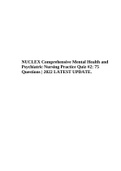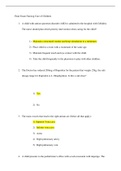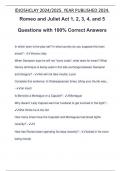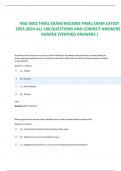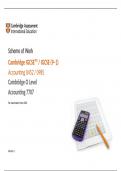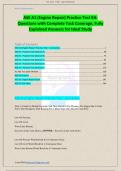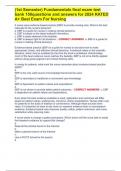Tentamen (uitwerkingen)
WGU C207 Data-Driven Decision-Making Final Exam (2024 / 2025) Questions and Verified Answers, 100% Guarantee Pass
- Vak
- Instelling
WGU C207 Data-Driven Decision-Making Final Exam (2024 / 2025) Questions and Verified Answers, 100% Guarantee Pass WGU C207 Data-Driven Decision-Making Final Exam (2024 / 2025) Questions and Verified Answers, 100% Guarantee Pass WGU C207 Data-Driven Decision-Making Final Exam (2024 / 2025) Que...
[Meer zien]






